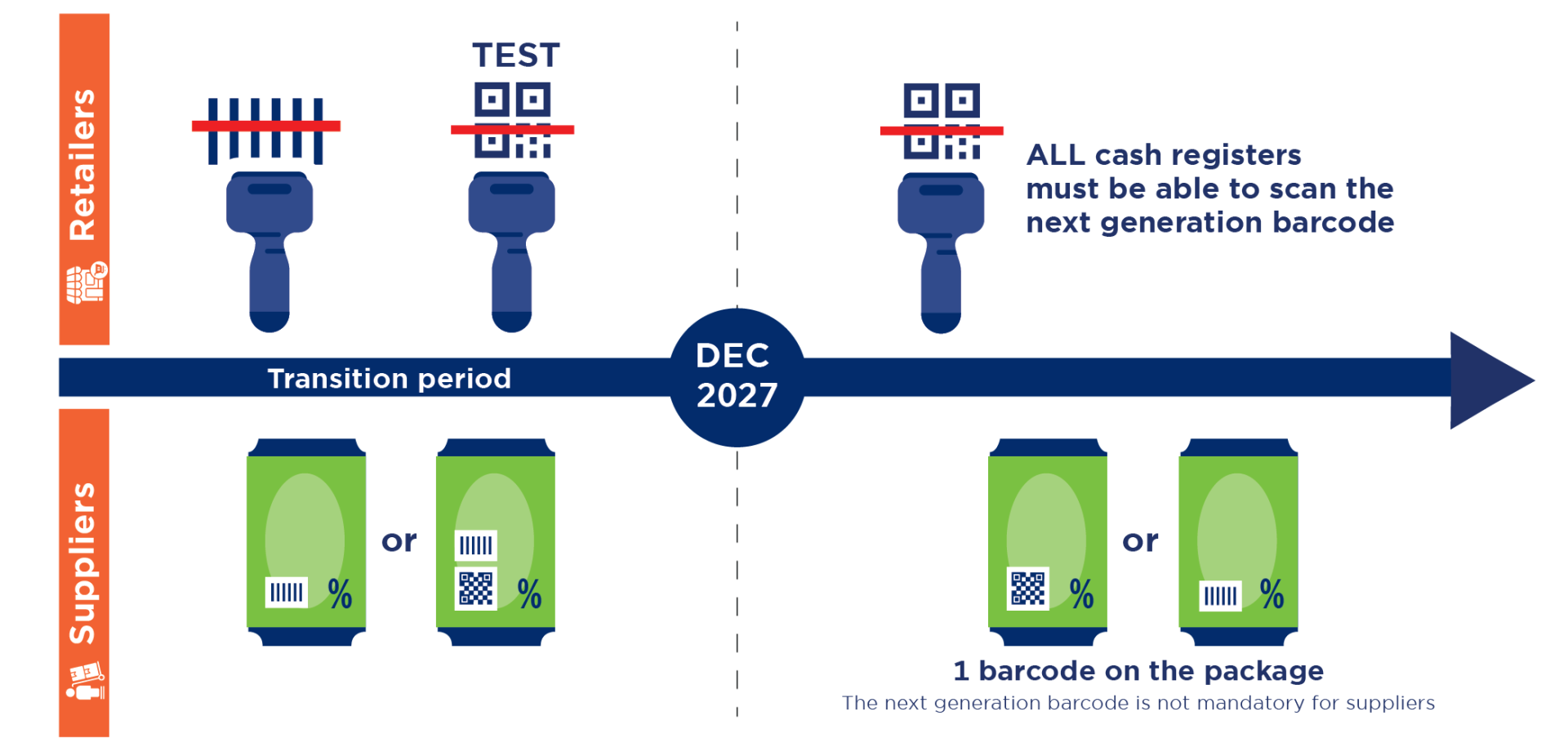Today, consumers and regulators expect more and more information, such as usage instructions, ingredients, certificates, recycling instructions, traceability, and so on. The current barcode can only contain a limited amount of information, intended solely for the various actors in the logistics chain.
Thanks to technological progress, the next generation of barcodes (GS1 QR code or GS1 DataMatrix) makes it possible to share much more information within the barcode. This brings benefits to consumers, retailers, and regulators — and it still beeps at the checkout!
What is the difference from the current barcode?
| Current barcode | Next generation barcode |
|---|---|
 |   |
| Can be scanned at the checkout | Can be scanned at the checkout |
| Contains only GTIN | Contains GTIN |
| No variable info | Can include expiration date, batch number, etc. |
| No link to the internet | QR code with GS1 Digital Link includes a link to the internet |
| Larger | Smaller |
| More easily unreadable if damaged or poorly printed | More resistant to damage or poor print quality |
By the end of 2027, retailers aim to be globally capable of scanning the next generation barcodes at checkout points.
To assist brand owners and retailers in adapting to the next generation barcodes, a transition period has been established. During this period, a brand owner can add a next generation barcode alongside their linear barcode.
It is important to note that this transition period is temporary, and by the end of 2027, only one next generation barcode (such as the QR code with GS1 Digital Link) is expected to remain on the label.

Note that for the supplier, the transition to the next generation barcodes is not mandatory. The supplier can continue to use the linear barcode if desired.

